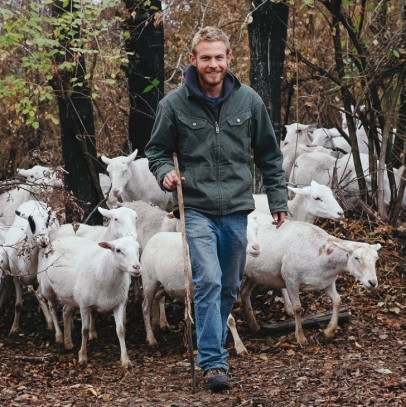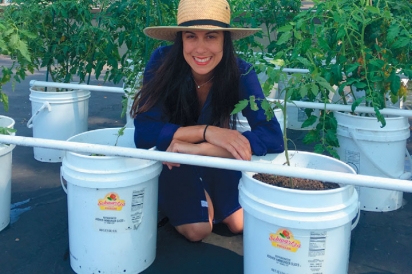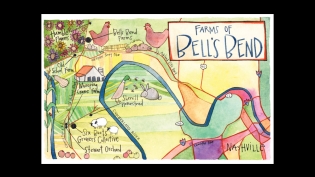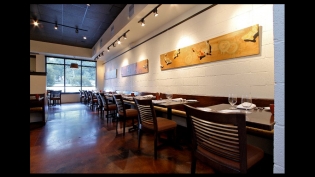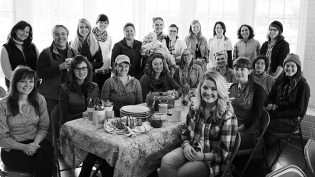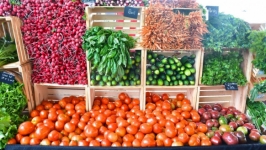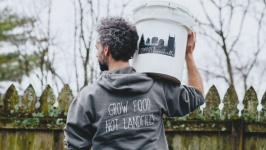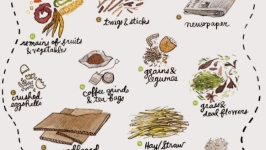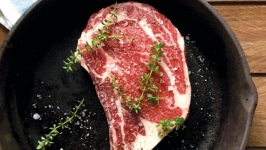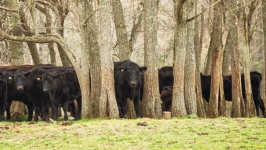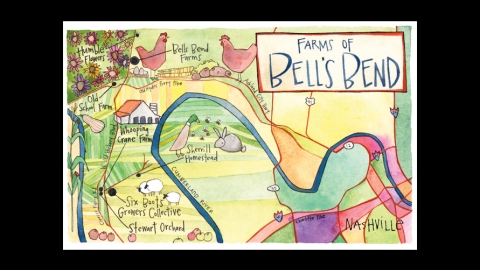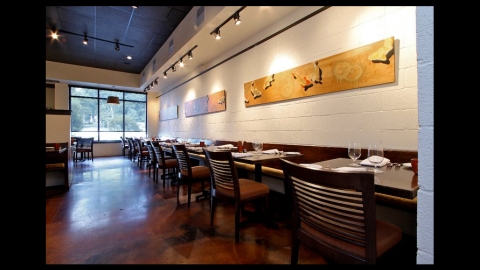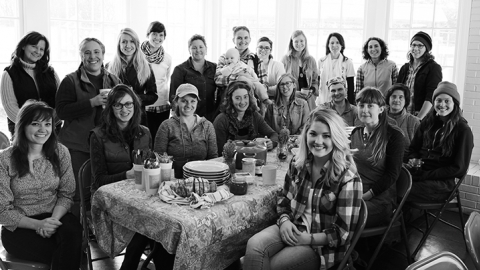Nashville’s Green Thumbs
Folks, farms, and organizations putting sustainability into action.
THE CHEW CREW
The sheep prance up the steep hill at Nashville’s Fort Negley as though gravity doesn’t apply. “These are the girls,” Zach Richardson grins. Zach is a modern-day shepherd, practicing a craft millennia old while using gadgets of today: an electric fence to keep the sheep in the right place, for example.
Zach’s flock, his “Chew Crew,” has been tasked to clear the hill to help restore the fort to its Civil War condition. The terrain is too dangerous for a bulldozer, but the intrepid sheep rush in like lions. What would be dirty, difficult work for a flock of folks is–for the flock of sheep–simply a day at the buffet with tummies full of yummy, and all four chambers at that.
Zach and his business associates–dogs Loretta, Sturgill, and Dougie–love their job. The four expertly herd the sheep as one–a veritable chew-chew train–over tricky terrain. The sheep, as Zach points out, are not only environmentally friendly, but also connect the present to good practices from the past, a perfect solution to the restoration of Fort Negley.
When asked whether he eats lamb, Zach smiled sheepishly. “Oh, yeah,” he grinned. So keep chewing, Chew Crew. Ewe got this.
Visit nashvillechewcrew.com for more information.
MIEL: HONEY AND SUSTAINABILITY
Seema Prasad is the mind behind Miel, Nashville’s classically influenced, refined bistro. Crave some smoked onion soup with Chanterelle mushrooms and Gouda? Miel can deliciously provide that for you, and all while keeping its environmental footprint très petit. With Seema’s background in environmental advocacy, Miel is a litany of best practices: locally sourced ingredients, roof and patio gardens for herbs and greens, gradual transition to full LED lighting (hey, hard to get that stuff just right for dining rooms), repurposed wood for some decor, and–bien sûr–all food waste to compost bins.
Seema explains how it has become easier for her and Andrew Coins–Miel’s executive chef–to source Miel’s food locally. “Cool thing now,” she says, “is that all the local farms email us with, ‘hey, here’s what we have fresh this week.’“ Even the duck and the lamb are raised nearby.
However, as green as Miel is, Seema still isn’t satisfied. Her brainchild is Resource Capture or ‘ReCap,’ a non-profit to build Nashville’s first dry anaerobic food waste digestor. Like the making of sausage, the process of “cooking” food scraps in a sealed vessel isn’t pretty, but the outcome is environmentally delicious; 98% of what goes in comes out as three valuble products: compost, biogas, and “leachate” or liquid fertilizer.
At present, Seema has grants from several benefactors including Bank of America, HCA, and the Tennessee Department of Environment and Conservation. However, the site still needs to be secured, and the more public support the better. To have your voice heard in favor of an elegant solution to food waste, go to resourcecapture.com to sign up and stay in the loop.
THE GLEAN PLATE CLUB
Waste not, want not. Good advice that the Society of St. Andrew more than takes to heart: it takes it to the bank–the food bank. SoSA is a non-profit with a mission to bring healthy food to those in need by gleaning farmers’ fields and salvaging surpluses. The seed of this idea was planted in the late 1970’s in Virginia. From there, the ecumenical organziation has blossomed throughout the Southeast to provide over 750-million pounds of nutritious food to hungry Americans, food that otherwise would have rotted in fields or have taken up space in landfills.
Here in our neck of the woods, SoSA’s efforts are led by Jeanie Hunter and Kelsey Miller. Jeanie, the regional manager of SoSA Tennessee, explains the economics. “When we salvage surpluses at warehouses, we save farmers landfill disposal costs. In addition, farmers can then write off the value of the surplus as a donation.” Of course, there is a social cost saved here as well in the form of methane reduction from landfills. Almost half of the national food waste problem–about 40% of the food we produce is squandered–occurs at farm level. However, as Pogo Possum once famously said, “we have met the enemy, and he is us.” We, the consumers, turn up our noses on perfectly good produce if it is too small, or too big, or too crooked, or looks like the face of Richard Nixon if held at a certain angle and squinted at.
Enter SoSA to organize volunteers to glean fields and rescue plain-Jane produce, finding it happy homes and hungry tummies. There is a lot around Nashville to gather and distribute, Kelsey points out. “We glean sweet potatoes, squash, green beans, tomatoes, even blueberries.” In short, anything that is healthy and wholesome and would otherwise go to waste, will–thanks to SoSA and its many helping hands–go to taste instead.
To become a pair of those helping hands, join The Glean Plate Club, too. To start, simply plant a little seed of an email here: sosatn@endhunger.org They’ll be happy to have you!
GET GREEN: 3 PLACES TO VOLUNTEER
Nashville Food Project–cook, garden, deliver meals to the needy.
Society of St. Andrews–harvest and package”seconds” from fields
Farm to Families–help grow and harvest crops on local farms


